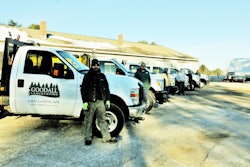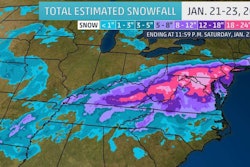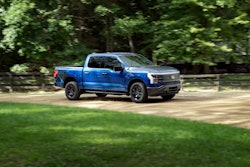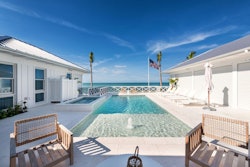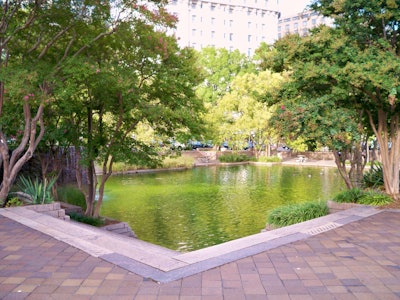 Pershing Park was dedicated in 1981 and features a statue of U.S. Army Gen. John J. Pershing, commander of the American Expeditionary Force in Europe in World War I. After the war, Pershing served as Army Chief of Staff from 1921-24.
Pershing Park was dedicated in 1981 and features a statue of U.S. Army Gen. John J. Pershing, commander of the American Expeditionary Force in Europe in World War I. After the war, Pershing served as Army Chief of Staff from 1921-24.Photo: Matthew Bisanz
Washington is known for its plethora of monuments and memorials, but a major site made in remembrance of World War I has been lacking. On Tuesday, however, the World War I Centennial Commission announced that The Weight of Sacrifice by Joe Weishaar and Sabin Howard had been selected out of the five finalists as the new proposed war memorial.
While many see this as long overdue, the proposed location has caused some dissension. The commission originally had hoped the memorial would be at the National Mall, alongside monuments for World War II and the Korean War, but met with federal restrictions.
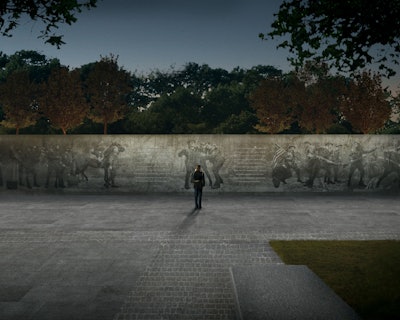 A rendering of winning finalist’s design, “The Weight of Sacrifice.”
A rendering of winning finalist’s design, “The Weight of Sacrifice.”Photo: World War I Centennial Commission
Instead, the WWI memorial will be built at Pershing Park, designed by landscape architect M. Paul Friedberg, with a planting plan by landscape architects Oehme, van Sweden.
The current proposal would mean the complete demolition of Pershing Park, even though the National Park Service (NPS) is currently determining whether the park is eligible for listing in the National Register of Historic Places.
Pershing Park is also featured at the National Building Museum as part of the exhibit, “The New American Garden: The Landscape Architecture of Oehme, van Sweden.”
The Commission of Fine Arts (CFA), the National Capital Planning Commission (NCPC), and the District of Columbia State Historic Preservation Office (DCSHPO) – all of which must approve the WWI memorial project – have raised questions about the current design.
Thomas Luebke, secretary of the CFA, wrote in an official letter, “The Commission members observed that the competition designs appear to proceed from an underlying assumption that the existing park design is a failure, whereas its problems are a direct result of inadequate maintenance.”
While the statue of John J. Pershing would remain as part of the current design proposal, the rest of the park would be demolished and replaced. If the NPS determines Pershing Park is eligible to be listed on the National Register, which could be decided as early as March, the current design would be required to retain the signature elements of the existing park.
“The World War I Centennial Commission did meet with stakeholders and they also knew that Pershing Park would likely be eligible to the National Register, which would restrict the impact on the park, but they never really listened,” said Charles A. Birnbaum, president and CEO of The Cultural Landscape Foundation. “Instead, they opted for conflict over collaboration.”
The goal is for the memorial to be completed by the 100th anniversary of Armistice Day in November 2018. The project is privately funded and will have to raise at least $40 million, according to Commission Vice Chair Edwin Fountain.
